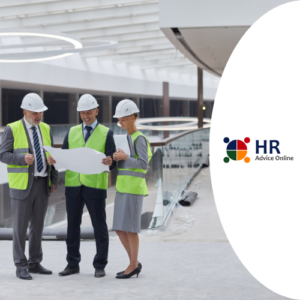Although hazards in an office-based environment may not be as obvious as those associated with high-risk work environments, such as on a construction site or in a warehouse, there are a range of risks which can impact on the health and safety for office workers. Below we identify and highlight some common office-based safety hazards that may be present in the workplace.
Below we identify and highlight some common office-based safety hazards that may be present in the workplace.
Manual handling tasks that are commonly performed in an office-based environment include, lifting and carrying boxes of photocopying paper, moving office furniture and equipment such as computers and printers or handling large files and books. Poor manual handling can cause injuries such as sprains and strains, back injuries, and soft-tissue injuries.
Workplace Stress – When an employee feels unsupported and unable to cope it may lead to an adverse psychological reaction known as stress and may lead to illness, injury, and job failure. Individual employees can have very different responses to the same stress factors.
Workplace bullying is repeated unreasonable behaviour directed towards a worker or group of workers that places their health or safety at risk and is likely to victimise, humiliate, undermine or threaten them.
Occupational violence refers to any incident in which a worker is physically attacked or threatened in the workplace, including any statement or behaviour that causes them to believe they are in danger of being physically attacked.
Fatigue may affect an employee’s physical and mental capacities and increase the risk of workplace incidents. Fatigue can result in errors of judgement that may lead to injury or death, affecting not only the employee, but the health and safety of others as well.
Inadequate Lighting – Good workplace lighting is essential to enable people to see clearly and perform their work safely. In general, good lighting should enable people to easily view their work and environment without the need to strain their eyes.
Noise within an office can originate from internal sources, such as office equipment, people and background noise generated by the building (e.g. from lifts and air conditioning). External noise sources can include road traffic and general industrial noise.
Office Air quality – In an office environment, the quality of the air is often controlled through an air conditioning system so have these checked regularly.
Ergonomics refers to a well-designed and adjusted workstation ensuring reduced risk of injury.
Slips, trips and falls can happen in any workplace. Electric cables across passageways, mats, unexpected steps in poorly lit areas, slippery surfaces and storage that requires workers to use step ladders or reach above shoulder height can all raise the risk of people slipping, tripping and falling.
Electrical safety – electrical appliances, power boards and power cords should be checked and maintained in good conditions and without overloading, as needed. Under occupational health and safety legislation all employers have a duty of care to provide a healthy and safe working environment. Employers should ensure all managers, supervisors, and employees are aware of their occupational health and safety responsibilities through consultation, documenting responsibilities and ensuring there are processes in place to hold people accountable for occupational health and safety performance.
Under occupational health and safety legislation all employers have a duty of care to provide a healthy and safe working environment. Employers should ensure all managers, supervisors, and employees are aware of their occupational health and safety responsibilities through consultation, documenting responsibilities and ensuring there are processes in place to hold people accountable for occupational health and safety performance.
To identify the actual hazards that exist in your particular work environment, you will need to undertake a risk assessment and consult with your staff. If you require advice or assistance with understanding your obligations in relation to consultation or should you require support regarding any health and safety matter, please contact the team at HR Advice Online at [email protected] or on 1300 720 004.
Information in HR Advice Online guides and blog posts is meant purely for educational discussion of human resources issues. It contains only general information about human resources matters and due to factors such as government legislation changes, may not be up-to-date at the time of reading. It is not legal advice and should not be treated as such.




